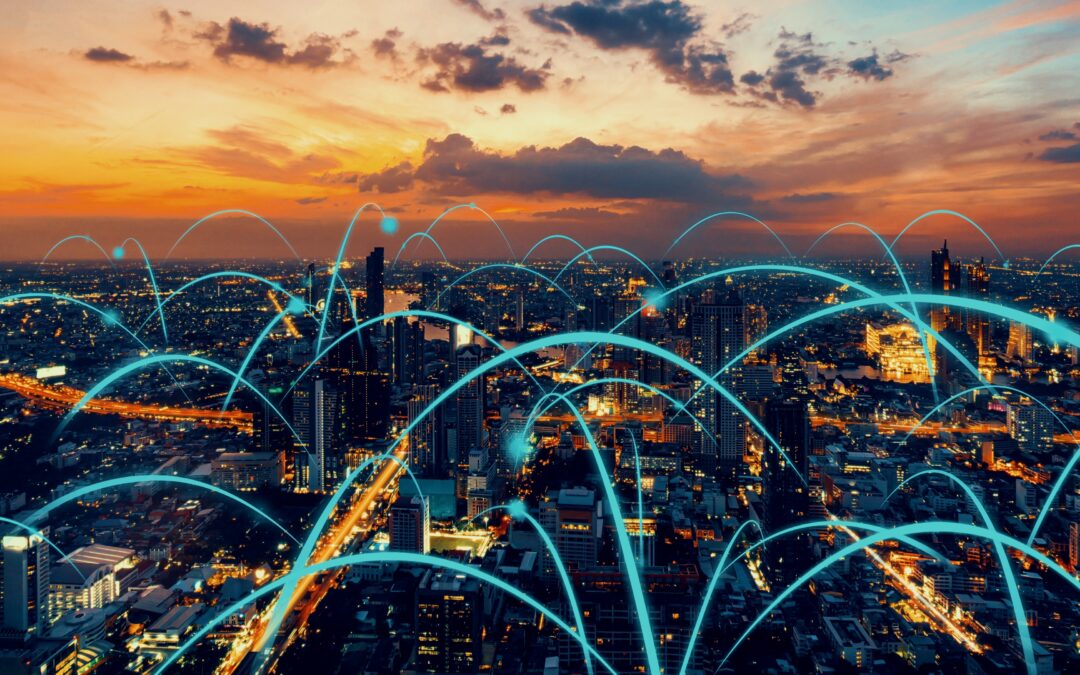Connected vehicles are capable of mass communication with their surroundings, including traffic lights, toll booths, parking facilities, and nearby vehicles. These communications include vehicle-to-vehicle (V2V), vehicle-to-infrastructure (V2I), and vehicle-to-everything (V2X), which include pedestrians and cyclists. Connected vehicle technology aims to improve driver safety, and while still relatively new, DSRC has been the longest standing technology for V2X. Now, with 5G entering the connected vehicle market, there is some debate about which technology should be used.
What are the Benefits of V2X Technology?
V2X technologies can provide numerous benefits for drivers. Motorists can receive alerts such as potential red-light running, future rear-end crashes, road curve, and road weather warnings, alerting them to potential hazards before they encounter them. The primary benefits of V2X technology are increased safety and mobility. V2X has the potential to connect different modes of transport and infrastructure, allowing for seamless movement, particularly in urban areas. Heightened levels of mobility and the potential to greatly reduce vehicle collisions and driver hazards are key elements to the V2X benefits driving uptake.
What is DSRC?
Dedicated Short Range Communication (DSRC) is a wireless communication technology that allows for communication between vehicles and surrounding infrastructure. DSRC provides high-speed, secure communication without requiring access to a cellular network. In the United States, it is the predominant technology used for connected vehicles, operating in the 5.9 GHz band. While this band was dedicated to the exclusive use of DSRC, as of November, 2021, the lower 45 megahertz have been made available for unlicensed Wi-Fi use, limiting DSRC. The continued research of DSRC technology is a priority of the Department of Transportation Joint Program Office, though few active vehicles are DSRC compatible. Automakers have been hesitant to incorporate DSRC without assurances that other automakers will introduce it as well, because unless a high majority of vehicles are using the same technology, they won’t be able to communicate.
What is 5G for Connected Vehicles?
In relation to connected vehicles, 5G is often used to refer to the fifth-generation cellular chip used in C-V2X communications. While 4G can be used for vehicle communications, 5G offers greater speed and reliability than its predecessor. As discussion shifts toward C-V2X technologies, 5G is often used alongside discussions of autonomous vehicles because of the speed and connectivity it offers. 5G technology is gaining popularity, and some automakers, such as Ford, have been preparing to introduce the technology to their new vehicles.
DRSC or 5G? 5 Metrics Compared
1. Speed
When a vehicle is equipped with DSRC technology, the location, heading, and speed are broadcasted 10 times per second. 5G connected vehicles have a data collection speed of up to 10GB per second, with a throughput potential of 10TB per square kilometer. Both technologies are much faster than previously existing technologies, making them more reliable for transmitting safety messages.
2. Latency
Both DSRC and 5G boast low latency, with each technology meeting the safety requirements for V2V communication. The technologies feature latency within milliseconds, with 5G latency in the 1-5 millisecond range.
3. Range
DSRC uses high-speed communication even when there are physical obstacles or extreme weather conditions, and the technology can operate at high driving speeds up to 500 km/h. The range of DSRC is usually 300 meters, but studies suggest the range could go longer if needed. 5G has a similar range of around 300 meters, but 5G waves are more easily blocked by obstacles. Overall, it is predicted that 5G capabilities could handle 1 million connected devices per square kilometer.
4. Scalability
One of the major benefits of DSRC is that it has already been designed, verified, and deployed in regional testing pilots in the United States. 5G, while not yet being used at the same scale, offers advantages to various smart city and IoT goals that may result in cities making investments in this technology for multiple uses, meaning a transition to 5G in connected vehicles would be easier. While DSRC and 5G cannot be used together, 5G offers more interoperability in the long-term. In terms of scalability, DSRC requires government funding and maintenance, whereas 5G can be run on private cell towers. While private cell towers may mean less funding is needed from governments, it may be difficult to implement large scale 5G connected vehicles if individual drivers are asked to pay the brunt of the costs.
5. Deployment Costs
An argument for DSRC surrounds the fact that DSRC has been around longer than 5G, and governments have already begun incorporating this technology into their infrastructure. Despite that, government funding is still a concern, since cellular networks have more freedom in spending. A possible concern is that adding 5G technology where DSRC is already in practice could be extremely costly, since chips and beacons would have to be attached to infrastructure at a mass scale. Since the COVID-19 pandemic, there is a cellular chip shortage, meaning necessary equipment could become more costly and hard to come by, which may stall 5G implementation. There is concern amongst DSRC supporters in the United States that the 5G network is not yet prepared or capable to host so many connected devices, especially when safety is such a strong focus for connected vehicles.
While there is agreement that connected vehicles and V2X technology is extremely beneficial for driver safety and mobility, there is debate about whether or not DSRC or 5G should be used, and as the FCC limits the available bandwidth for DSRC use and looks at 5G, the debate is likely to continue. Preference varies by manufacturer and country, with the United States currently more invested in DSRC and China investing in cellular connected vehicle technologies. 5G is still evolving to fit the V2X market, and as connected vehicle technologies develop, time will show how DSRC and 5G will co-exist.

